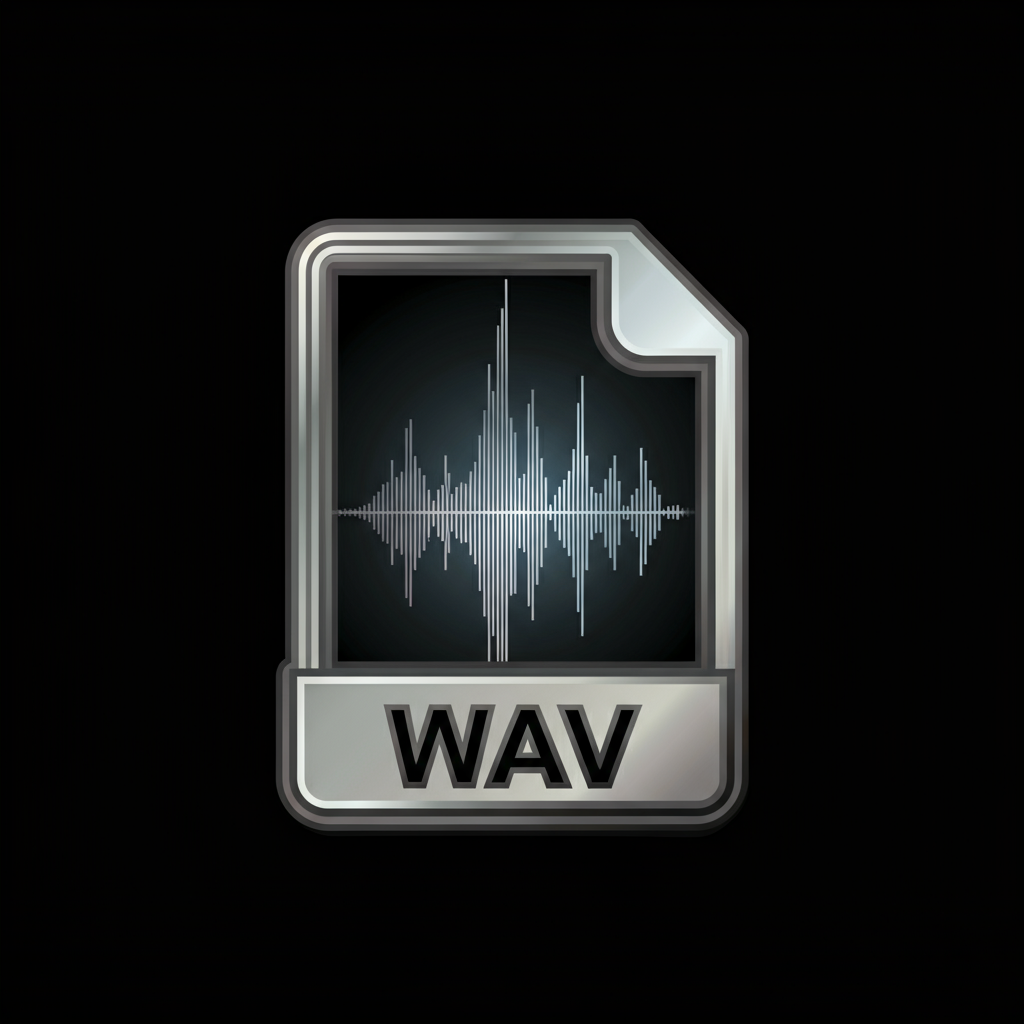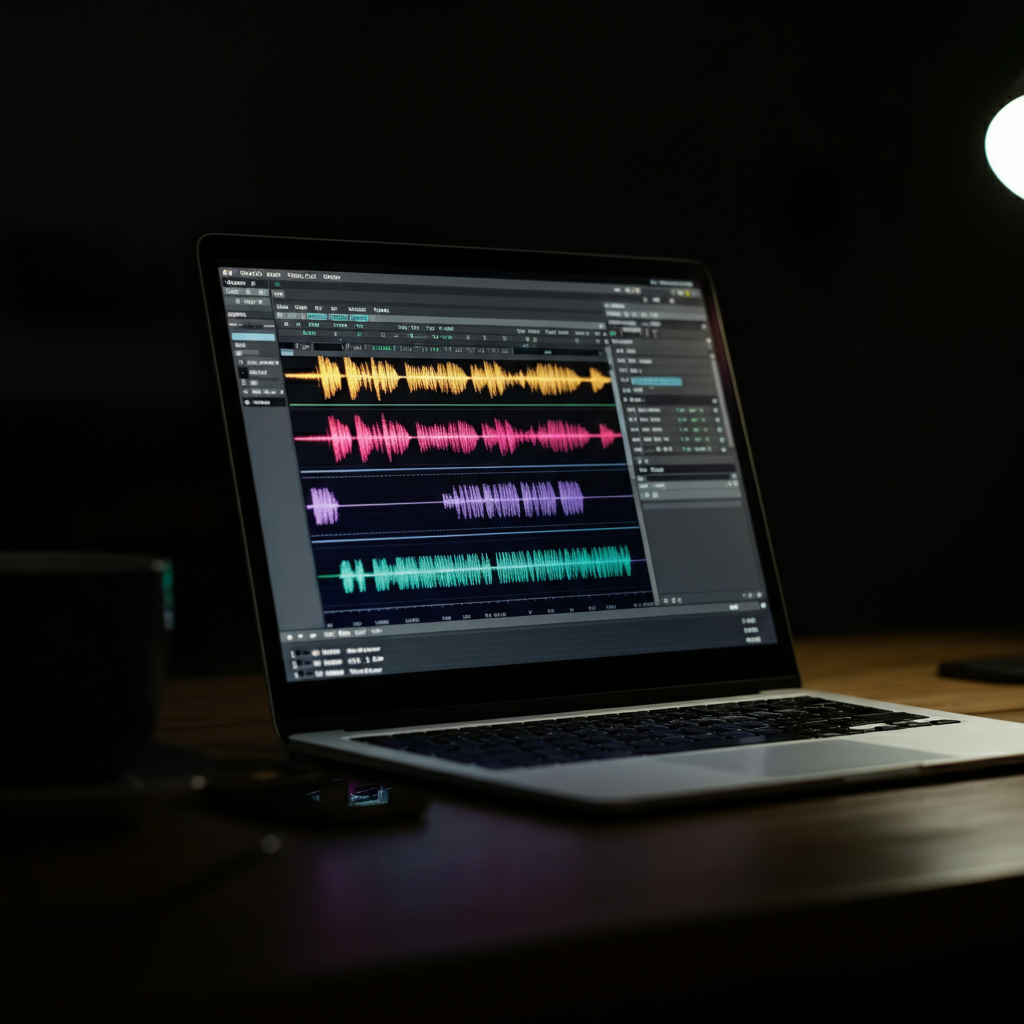Technology
|
2 July 2025
How to Export Audio in Waveform (WAV): Step-by-Step Guide for High-Quality Sound
Written by Faizan
Full Stack Developer
Learn how to export audio in waveform format (WAV) with step-by-step instructions for Audacity, Adobe Audition, and GarageBand. Ideal for crystal-clear sound!

Table of Contents
When working with audio files, exporting them in the correct format is essential for ensuring compatibility, high quality, and ease of use. One of the most popular formats for professional audio work is the waveform audio format, commonly known as WAV.
This guide will cover everything you need to know about exporting audio in waveform, the importance of this format, and step-by-step instructions on using popular audio software.
Whether you're a beginner or seasoned audio editor, these tips will help you enhance your workflow and create optimal audio files.
What Is Waveform Audio?
Waveform Audio File Format (WAV) is a standard digital audio format developed by IBM and Microsoft.
It is widely used in professional audio applications due to its uncompressed nature, which means WAV files retain superior audio quality compared to compressed formats like MP3.
Because of this, the WAV format is ideal for tasks such as music production, podcasting, and file mastering.
Why Is Exporting Audio in Waveform Important?

High Audio Quality
WAV files store audio in raw, lossless form, meaning no data is removed during compression. This results in crystal-clear sound quality, preserving every nuance of the recording.
Widespread Compatibility
Most audio editing and playback software support the WAV format, making it a universal choice for sound professionals and creators.
Editing Precision
Due to their uncompressed nature, WAV files are excellent for further editing. Audio engineers often prefer this format because it provides the best starting point for complex sound manipulation.
Archiving Purposes
WAV files serve as a reliable option for archiving master recordings without losing quality over time.
Benefits of Exporting Audio in WAV Format
- Preserved Fidelity: Perfect for high-quality reproductions.
- Ease of Use: Intuitive integration with most editing software.
- Superior Playback: Ideal for professional-grade sound systems.
How to Export Audio in Waveform Using Popular Software
To make exporting WAV files easier, here’s how you can achieve it with some commonly-used audio editing tools.
1. Audacity
Audacity is a free, powerful, and user-friendly software. It's popular among beginners and intermediate users for tasks like recording, editing, and exporting audio.
Steps to Export Audio as WAV in Audacity
- Open your audio project in Audacity.
- Click File in the top menu bar.
- Select Export > Export as WAV.
- Choose your preferred location to save the file.
- Adjust the format settings, such as sample rate and bit depth (recommended settings are 44.1 kHz and 16-bit).
- Optionally, add metadata tags for easier identification.
- Click Save. Your WAV file is now ready!
Tip: Ensure you’ve configured your audio preferences in Audacity’s settings for optimal export quality.
2. Adobe Audition
Adobe Audition is a robust tool frequented by audio professionals. Its advanced features cater to precise and complex edits while supporting most output formats, including WAV.
Steps to Export Audio as WAV in Adobe Audition
- Open your project or audio clip in Adobe Audition.
- Navigate to File > Export.
- Select File... from the dropdown menu.
- Set the Format to Waveform Audio.
- Adjust sample rate and resolution settings (48 kHz and 24-bit are ideal for professional projects).
- Choose the destination folder and rename your file if needed.
- Press OK to export.
Tip: Before exporting, normalise your audio levels to avoid clipping and distortion.
3. GarageBand
GarageBand, exclusive to Apple devices, is an excellent tool for basic audio editing. Although tailored for hobbyists, it provides clean waveform exports.
Steps to Export Audio as WAV in GarageBand
- Complete your audio editing in GarageBand.
- Click Share in the top toolbar.
- Select Export Song to Disk.
- Set the file format to Uncompressed (AIFF/WAV).
- Tick the WAV option within the uncompressed section.
- Choose your export quality level (such as 24-bit for high-quality output).
- Save the file to your desired location.
Tip: For larger projects, consider splitting your project into manageable portions before exporting to prevent lag or crashes.
Pro Tips for High-Quality WAV Exports

Set Optimal Bit Depth and Sample Rate
Use a higher bit depth (like 24-bit) and a sample rate of at least 44.1 kHz for professional-grade audio. However, bear in mind the file size will increase proportionally.
Normalise Audio Levels
Before exporting, ensure all tracks are properly balanced, removing any peaks that might distort playback. Normalization is a great way to keep track volumes consistent.
Check for Silence or Hiss
Play back your audio before finalizing the export to catch any unwanted noise or silence that might detract from quality.
Export Backup Versions
Always save multiple versions of your work, especially for large projects. It’s better to have a backup handy in case you need to tweak settings!
Troubleshooting Export Issues
Encountering hiccups during the process? Here are solutions to some common problems:
- Exporting Generates an Error
Check your storage space; WAV files can be large. Ensure the save location has enough free space.
- Low Audio Quality Post-Export
Confirm that uncompressed WAV settings are applied. Avoid flattening layers that aren’t finalised.
- Software Freezing Mid-Export
Close other active applications to free system resources or break your project into smaller sections.
Final Words
Exporting audio in the waveform format is a vital skill for anyone working in sound editing, production, or archiving. Following the steps above ensures you create high-quality files suitable for any professional or hobbyist purpose.
Whether you use Audacity, Adobe Audition, or GarageBand, you now have a clear roadmap to successfully export your work.
Discover More Audio Editing Tips
Want to refine your audio editing skills further? Visit How to Make an Audio File for tutorials, tools, and insightful resources tailored for both beginners and experts in audio!
Waveform Audio Export FAQ
What is waveform audio?
Waveform Audio File Format (WAV) is an uncompressed audio format that retains the highest quality of sound. It’s widely used by professionals for tasks like music production, podcasting, and mastering because it preserves every detail of the original recording.
Why should I use WAV format?
- High Quality: WAV files store audio data in a lossless format, ensuring maximum fidelity.
- Compatibility: It’s supported by almost all audio editing and playback software.
- Editing Precision: Its uncompressed nature makes it ideal for further editing and manipulation.
- Archiving: WAV is perfect for archiving master recordings due to its durability.
What are the best settings for exporting WAV files?
To achieve optimal sound quality, follow these settings:
- Bit Depth: 16-bit for general use or 24-bit for professional projects.
- Sample Rate: 44.1 kHz for CD-quality audio or 48 kHz for higher-quality output.
- Channel: Stereo for most applications.
Can I convert other formats to WAV?
Yes! Many audio editors and file conversion tools allow you to convert formats like MP3, AAC, and FLAC into WAV. Just keep in mind that converting from a compressed format (e.g., MP3) to WAV won’t improve the quality, as it depends on the source file’s original resolution.
Which software supports exporting in WAV format?
- Audacity: A free, beginner-friendly editor.
- Adobe Audition: A professional-grade tool with advanced features.
- GarageBand: An Apple-exclusive software for hobbyists and creatives.
- Many others, including Logic Pro, Pro Tools, and Reaper, also support WAV exports.
How do I troubleshoot export issues?
- File Too Large: Ensure you have enough storage space; WAV files are sizeable.
- Low Quality: Double-check bit depth and sample rate settings during export.
- Software Crashes: Close unnecessary applications and split large projects into smaller sections before exporting.
- Metadata Not Saving: Confirm you’ve added metadata in the export settings or supported fields of your software.
Looking for more audio editing tips? Visit transcripter.co to refine your skills!
Revolutionize Your Workflow with Transcripter
Ready to streamline your content creation?
